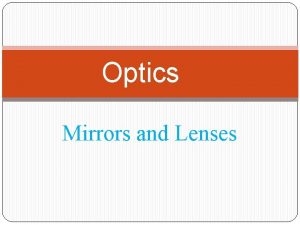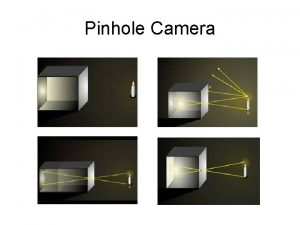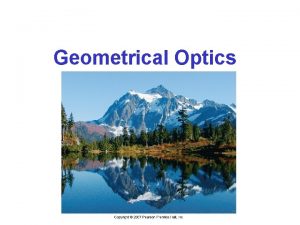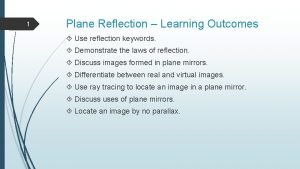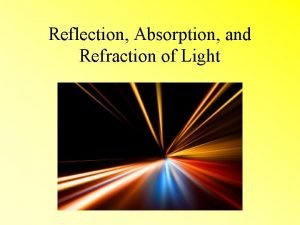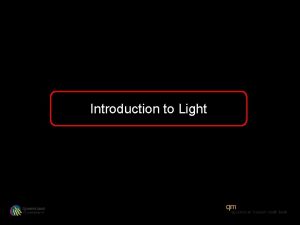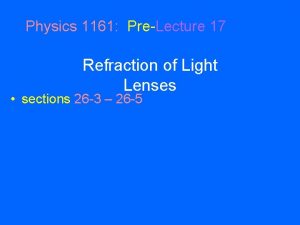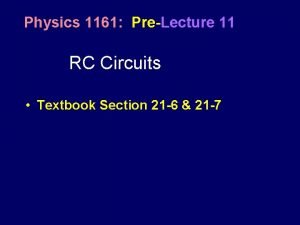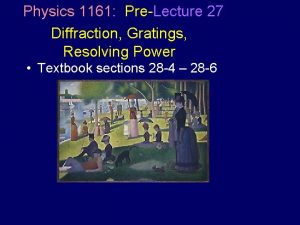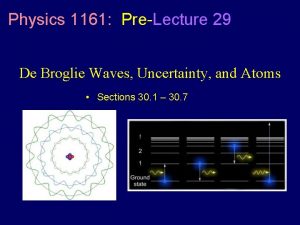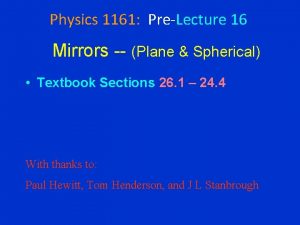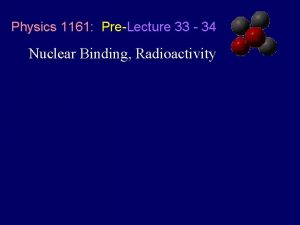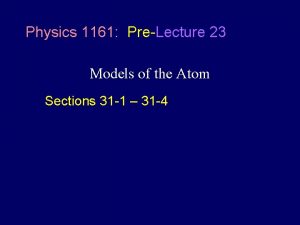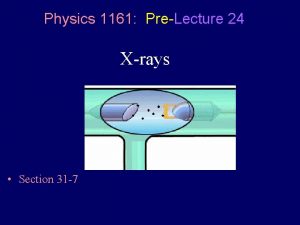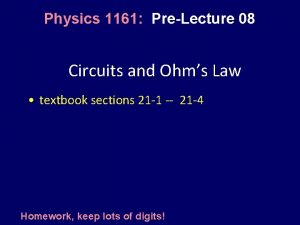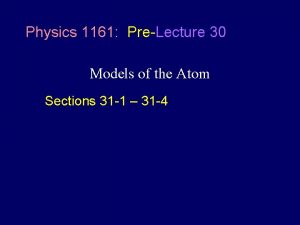Physics 1161 Prelecture 16 Reflection of Light Definitions











- Slides: 11

Physics 1161 Prelecture 16 Reflection of Light

Definitions • Luminous objects – generate their own light (the sun) • Illuminated objects – reflect light (the moon) • Line of Sight – a line from an object or image to your eyes (light from the object travels along this line to your eyes)

Line of Sight • Both luminous & illuminated objects emit/reflect light in many directions. • Your eye sees only the very small diverging cone of rays that is coming toward it.

Rays of Light • Incident Ray – leaves the object and strikes the mirror • Reflected Ray – leaves mirror and strikes your eye • The reflected ray is on the line of sight from the image to your eye.

Law of Reflection • Angle of incidence equals angle of reflection.

Law of Reflection • Normal – line perpendicular to the mirror surface • Angle of incidence – angle between incident ray and normal • Angle of reflection – angle between reflected ray and normal

Image Formed By Plane Mirror • Image is virtual. • Image is located as far behind the mirror as the object is in front of the mirror. Slide 7

Law of Reflection Curved Mirrors • Angle of Incidence is equal to the angle of reflection

Converging Mirror • A series of flat mirrors can be arranged to reflect parallel light through a single point. • Increasing the number of flat mirrors causes the shape to more closely approximate a parabola and causes the reflected light to converge in a smaller area.

Parabolic vs Spherical • Close to the axis of the mirror, the parabola and the circle are almost the same shape. • Farther from axis the parabola flattens out. • It is easier and less expensive to make spherical mirrors.

Concave Mirror Terms & Formulas • • • Axis Center of Curvature Radius of Curvature Focus Focal Length
 Light light light chapter 23
Light light light chapter 23 Into the light chapter 22
Into the light chapter 22 Light light light chapter 22
Light light light chapter 22 Regular reflection
Regular reflection Pinhole camera reflection
Pinhole camera reflection Reflection light analogy
Reflection light analogy Light strikes
Light strikes Mirror formula
Mirror formula Use of reflection of light
Use of reflection of light Reflection refraction absorption transmission
Reflection refraction absorption transmission Introduction of light reflection and refraction
Introduction of light reflection and refraction Reflection of light
Reflection of light



